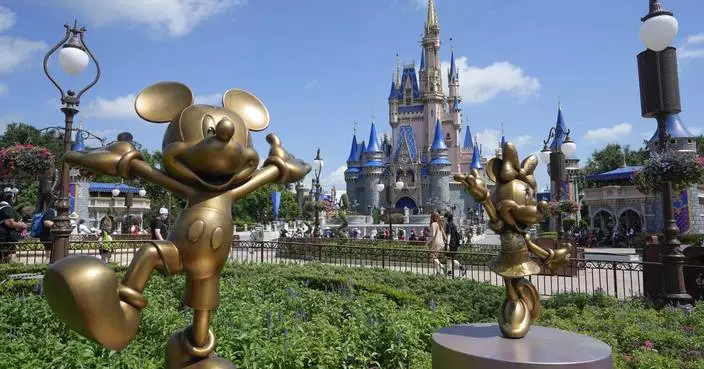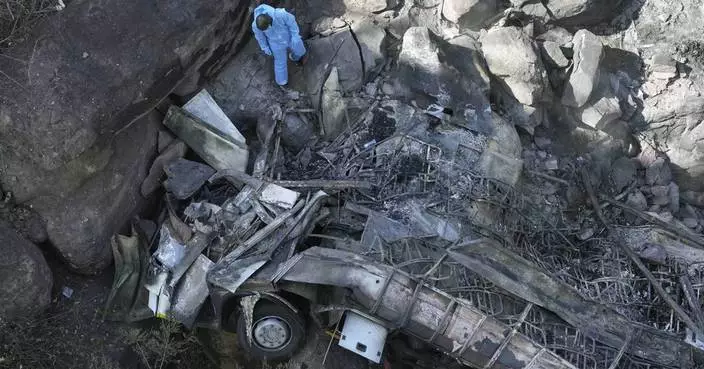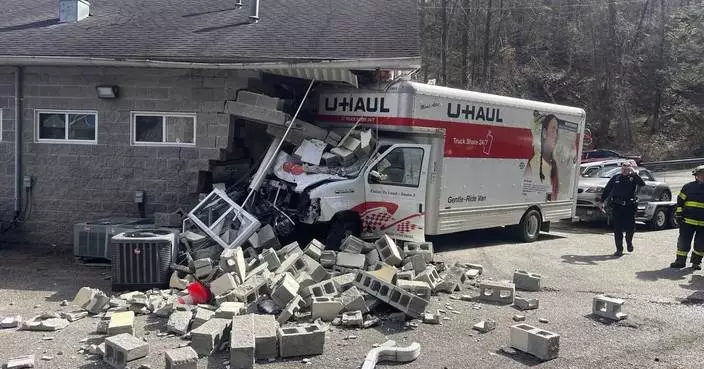A bus carrying children to school in southern Germany hit multiple cars and then slammed into the side of a building without braking, injuring 48 people early Tuesday, including 10 seriously, police said.
The injured were 43 children and the bus driver, as well as other adults who were aboard the bus, said Mannheim police spokesman Christoph Kunkel.
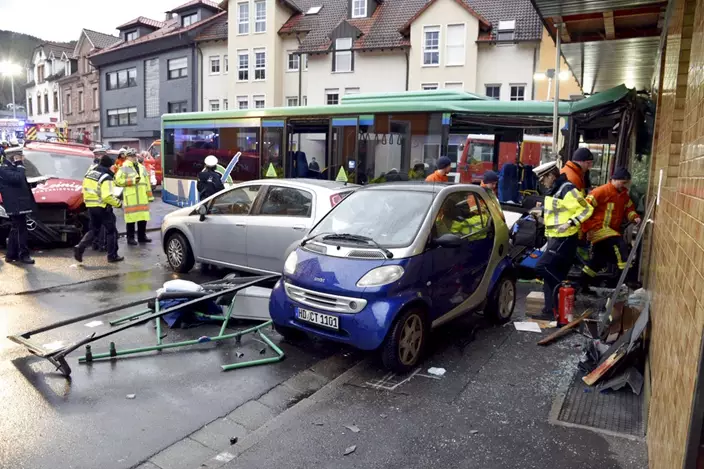
Firefighters work beside a bus sitting in the facade of a building in Eberbach near Mannheim, southern Germany, Tuesday, Jan 16, 2018. Several students inside the school bus have been injured. (Rene Priebe/dpa via AP)
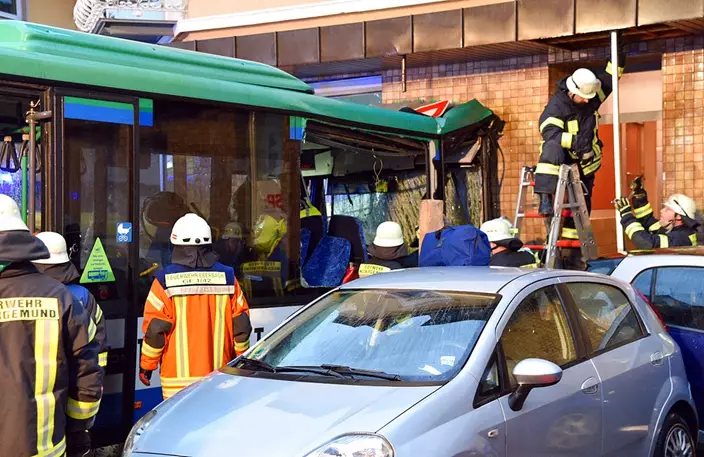
Firefighters work beside a bus sitting in the facade of a building in Eberbach near Mannheim, southern Germany, Tuesday, Jan 16, 2018. Several students inside the school bus have been injured. (Rene Priebe/dpa via AP)
Three helicopters and 10 ambulances rushed to the scene in the town of Eberbach, about 50 kilometers (30 miles) east of Mannheim, to bring the injured to area hospitals for treatment.
The bus crashed just after 7 a.m. as it was driving around a left-hand bend in the road in Eberbach. It wasn't immediately clear what caused the accident, but Kunkel said the driver had been able to talk with police following the crash.
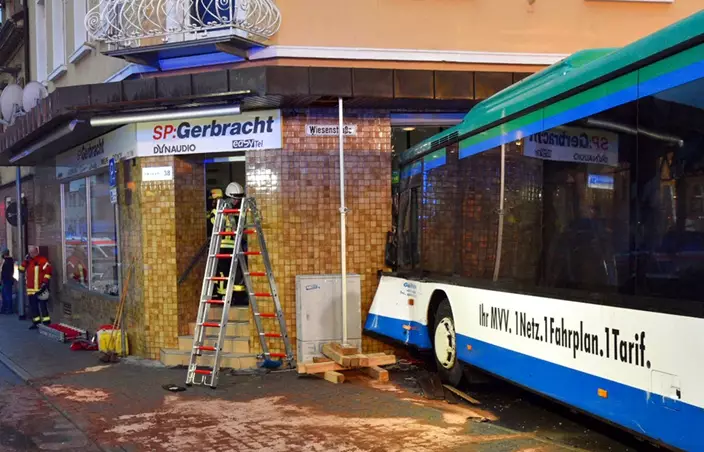
A bus sits in the facade of a building in Eberbach near Mannheim, southern Germany, Tuesday, Jan 16, 2018. Several students inside the school bus have been injured. (Rene Priebe/dpa via AP)
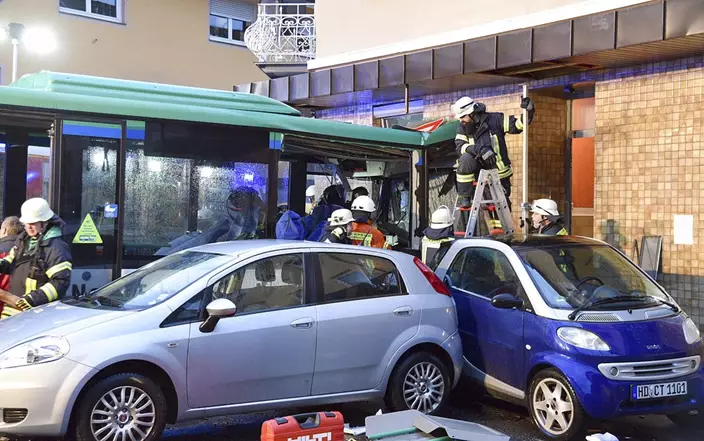
Firefighters stand beside a school bus which crashed into a house wall in Eberbach near Mannheim, southern Germany, Tuesday, Jan. 16, 2018. Several students have been injured. (Rene Priebe/dpa via AP)
A wide area around the accident scene was shut down to traffic as the incident is investigated.
UNITED NATIONS (AP) — Russia and Ukraine on Monday traded blame before the United Nations Security Council for the attacks on Europe’s largest nuclear power plant, which the head of the International Atomic Energy Agency said have put the world “dangerously close to a nuclear accident.”
Without attributing blame, IAEA Director General Rafael Mariano Grossi said his agency has been able to confirm three attacks against the Zaporizhzhia Nuclear Power Plant since April 7.
“These reckless attacks must cease immediately,” he told the Security Council. “Though, fortunately, they have not led to a radiological incident this time, they significantly increase the risk … where nuclear safety is already compromised.”
The remote-controlled nature of the drones that have attacked the plant means that it is impossible to definitively determine who launched them, Grossi told reporters after the meeting.
“In order to say something like that, we must have proof,” he said. “These attacks have been performed with a multitude of drones.”
Zaporizhzhia sits in Russian-controlled territory in southeastern Ukraine and has six nuclear reactors.
Fears of a nuclear catastrophe have been at the forefront since Russian troops occupied the plant shortly after invading in February 2022. Continued fighting between Russian and Ukrainian forces — as well as the tense supply situation at the plant — have raised the specter of a disaster.
Ukraine and its allies on Monday again blamed Russia for dangers at the site, with the United States saying, “Russia does not care about these risks.”
“If it did, it would not continue to forcibly control the plant,” U.S. deputy ambassador Robert Wood told the Security Council, which met at the initiative of the U.S. and Slovenia.
Russia, for its part, said Ukraine was to blame for the attacks.
“The IAEA’s report does not pinpoint which side is behind the attacks,” Russia’s U.N. Ambassador Vassily Nebenzia said. “We know full well who it is.”
“Over the last few months, such attacks not only resumed,” Nebenzia said, “they significantly intensified.”
Ukraine’s ambassador to the U.N., Sergiy Kyslytsya, called the attacks “a well-planned false flag operation by the Russian Federation,” which he alleged Russia had designed to distract the world from its invasion of its neighbor.
The Zaporizhzhia facility is one of the 10 biggest nuclear plants in the world. Fighting in the southern part of Ukraine where it is located has raised the specter of a potential nuclear disaster like the one at Chernobyl in 1986, where a reactor exploded and blew deadly radiation across a vast area.
Neither Russia nor Ukraine in recent months has been able to make significant advances along the 1,000-kilometer (620-mile) front line crossing eastern and southern Ukraine. Drones, artillery and missiles have featured heavily in what has become a war of attrition.
Russia and Ukraine have frequently traded accusations over the Zaporizhzhia plant.
The most recent strikes did not compromise the facility, which is designed to withstand a commercial airliner crashing into it, the IAEA said.
The plant’s six reactors have been shut down for months, but it still needs power and qualified staff to operate crucial cooling systems and other safety features.
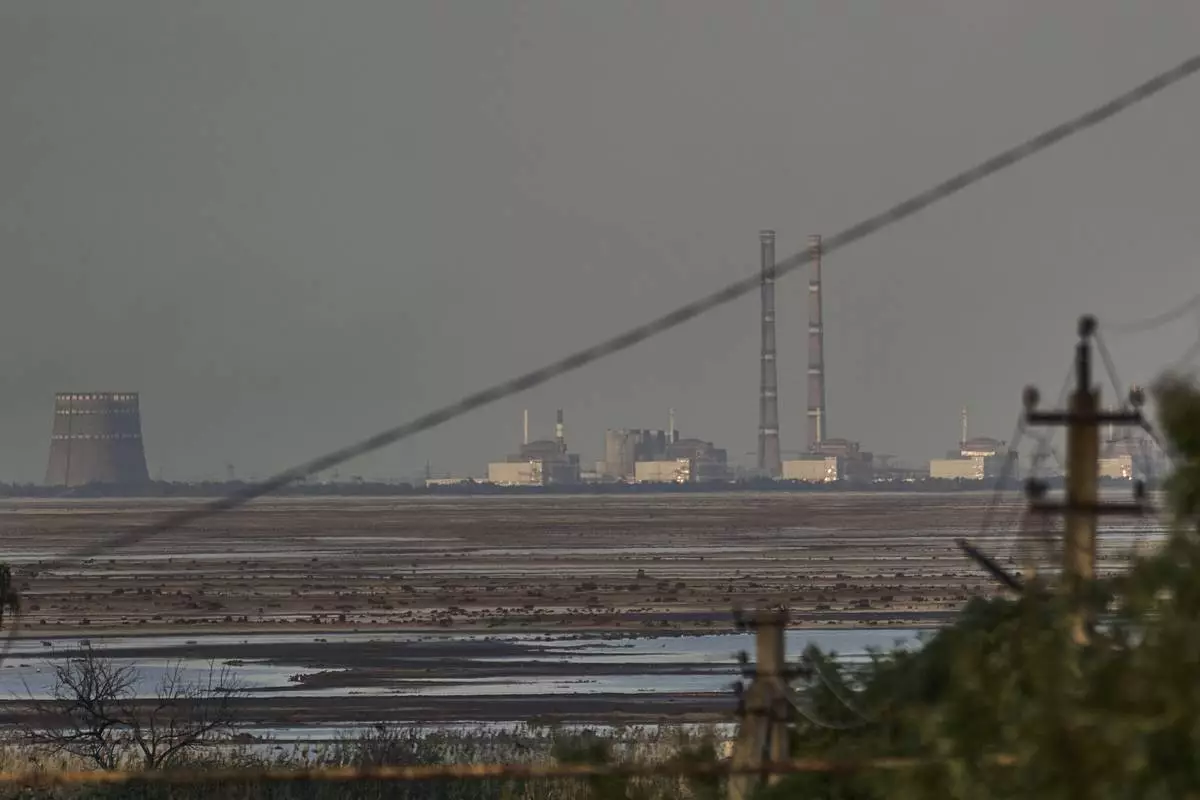
FILE - The Zaporizhzhia nuclear power plant, Europe's largest, is seen in the background of the shallow Kakhovka Reservoir after the dam collapse, in Energodar, Russian-occupied Ukraine, Tuesday, June 27, 2023. Officials at the Russian-controlled Zaporizhzhia Nuclear Power Plant said that the site was attacked Sunday April 7, 2024, by Ukrainian military drones, including a strike on the dome of the plant’s sixth power unit. (AP Photo/Libkos, File)
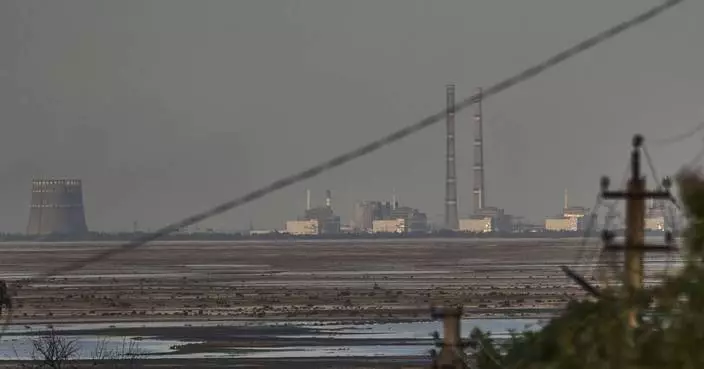
IAEA warns that attacks on a nuclear plant in Russian-controlled Ukraine put the world at risk
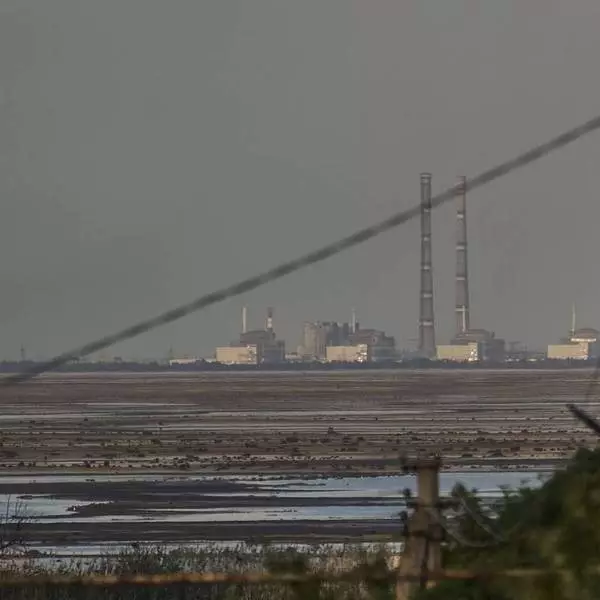
IAEA warns that attacks on a nuclear plant in Russian-controlled Ukraine put the world at risk











